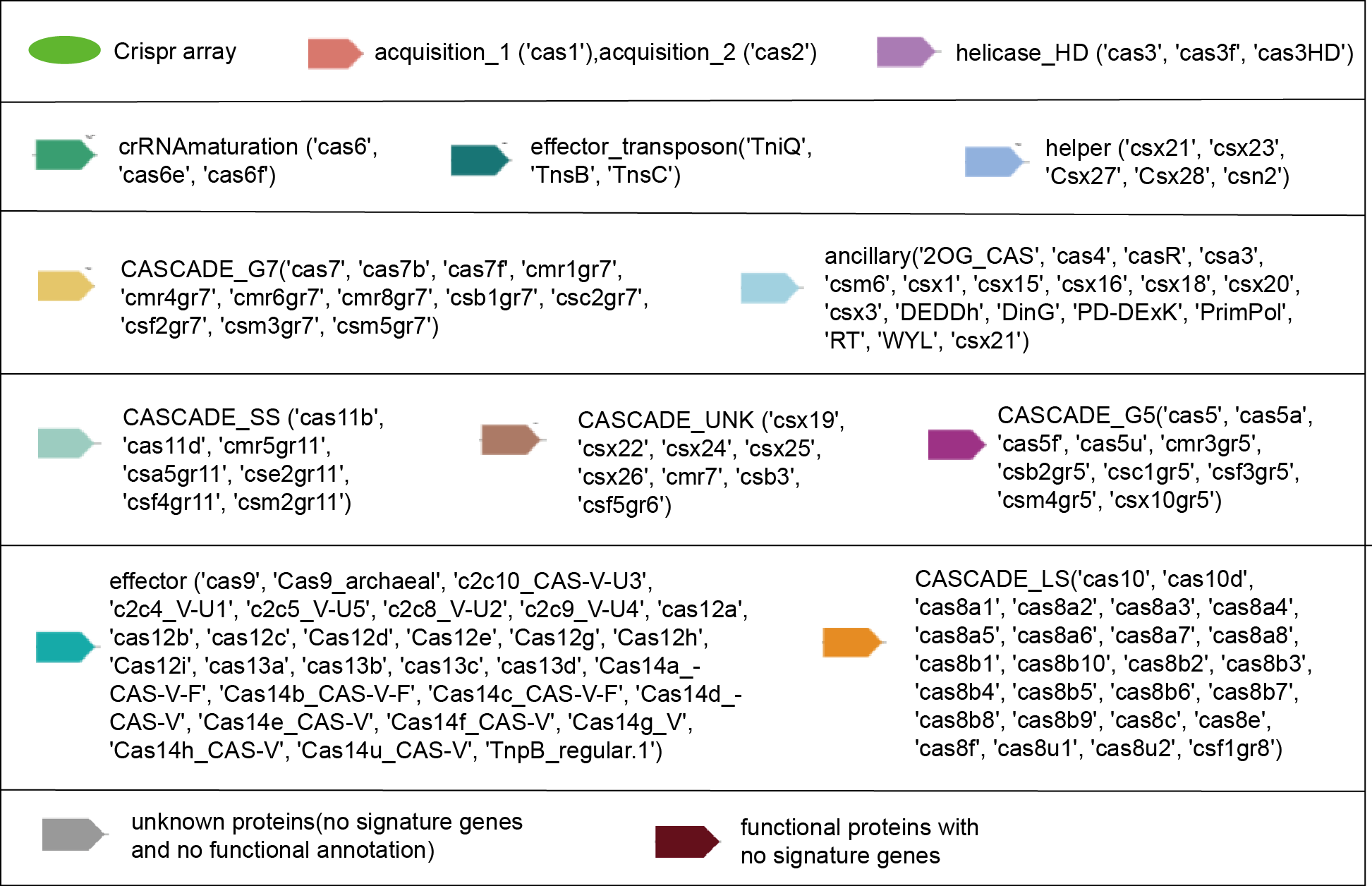| NZ_CP022505.1|WP_011183254.1|413136_413733_-|YihA-family-ribosome-biogenesis-GTP-binding-protein |
gnl|CDD|234770 |
PRK00454, engB, GTP-binding protein YsxC; Reviewed.
|
1.00391e-92 |
| NZ_CP022505.1|WP_029512207.1|399574_399826_-|hypothetical-protein |
gnl|CDD|179056 |
PRK00523, PRK00523, hypothetical protein; Provisional.
|
8.04158e-24 |
| NZ_CP022505.1|WP_106099772.1|396136_397678_+|glutamine-hydrolyzing-GMP-synthase |
gnl|CDD|234614 |
PRK00074, guaA, GMP synthase; Reviewed.
|
0 |
| NZ_CP022505.1|WP_011183260.1|417120_417285_-|30S-ribosomal-protein-S21 |
gnl|CDD|234707 |
PRK00270, rpsU, 30S ribosomal protein S21; Reviewed.
|
9.20545e-05 |
| NZ_CP022505.1|WP_106099780.1|407508_410130_-|valine--tRNA-ligase |
gnl|CDD|235582 |
PRK05729, valS, valyl-tRNA synthetase; Reviewed.
|
0 |
| NZ_CP022505.1|WP_106099776.1|399861_401829_-|transketolase |
gnl|CDD|223100 |
COG0021, TktA, Transketolase [Carbohydrate transport and metabolism].
|
0 |
| NZ_CP022505.1|WP_106099777.1|402095_403193_-|ribosome-biogenesis-GTPase-YqeH |
gnl|CDD|213834 |
TIGR03597, GTPase_YqeH, ribosome biogenesis GTPase YqeH. This family describes YqeH, a member of a larger family of GTPases involved in ribosome biogenesis. Like YqlF, it shows a cyclical permutation relative to GTPases EngA (in which the GTPase domain is duplicated), Era, and others. Members of this protein family are found in a relatively small number of bacterial species, including Bacillus subtilis but not Escherichia coli. [Protein synthesis, Other].
|
4.5847e-140 |
| NZ_CP022505.1|WP_106099773.1|397668_398811_+|IMP-dehydrogenase |
gnl|CDD|238223 |
cd00381, IMPDH, IMPDH: The catalytic domain of the inosine monophosphate dehydrogenase. IMPDH catalyzes the NAD-dependent oxidation of inosine 5'-monophosphate (IMP) to xanthosine 5' monophosphate (XMP). It is a rate-limiting step in the de novo synthesis of the guanine nucleotides. There is often a CBS domain inserted in the middle of this domain, which is proposed to play a regulatory role. IMPDH is a key enzyme in the regulation of cell proliferation and differentiation. It has been identified as an attractive target for developing chemotherapeutic agents.
|
0 |
| NZ_CP022505.1|WP_097351171.1|401812_402067_-|DUF896-domain-containing-protein |
gnl|CDD|368690 |
pfam05979, DUF896, Bacterial protein of unknown function (DUF896). In B. subtilis, one small SOS response operon under the control of LexA, the yneA operon, is comprised of three genes: yneA, yneB, and ynzC. This family consists of several short, hypothetical bacterial proteins of unknown function. These proteins are mainly found in gram-positive firmicutes. Structures show that the N-terminus is composed of two alpha helices forming a helix-loop-helix motif. The structure of ynzC from B. subtilis forms a trimeric complex. Structural modelling suggests this domain may bind nucleic acids. This family is also known as UPF0291.
|
2.06017e-21 |
| NZ_CP022505.1|WP_106099781.1|410237_413144_-|cation-translocating-P-type-ATPase |
gnl|CDD|319781 |
cd02089, P-type_ATPase_Ca_prok, prokaryotic P-type Ca(2+)-ATPase similar to Synechococcus elongatus sp. strain PCC 7942 PacL and Listeria monocytogenes LMCA1. Ca(2+) transport ATPase is a plasma membrane protein which pumps Ca(2+) ion out of the cytoplasm. This prokaryotic subfamily includes the Ca(2+)-ATPase Synechococcus elongatus PacL, Listeria monocytogenes Ca(2+)-ATPase 1 (LMCA1) which has a low Ca(2+) affinity and a high pH optimum (pH about 9) and may remove Ca(2+) from the microorganism in environmental conditions when e.g. stressed by high Ca(2+) and alkaline pH, and the Bacillus subtilis putative P-type Ca(2+)-transport ATPase encoded by the yloB gene, which is expressed during sporulation. This subfamily belongs to the P-type ATPases, a large family of integral membrane transporters that are of critical importance in all kingdoms of life. They generate and maintain (electro-) chemical gradients across cellular membranes, by translocating cations, heavy metals and lipids, and are distinguished from other main classes of transport ATPases (F- , V- , and ABC- type) by the formation of a phosphorylated (P-) intermediate state in the catalytic cycle.
|
0 |
| NZ_CP022505.1|WP_106099786.1|416384_416993_-|short-chain-dehydrogenase |
gnl|CDD|236057 |
PRK07578, PRK07578, short chain dehydrogenase; Provisional.
|
5.20028e-101 |
